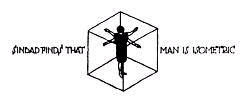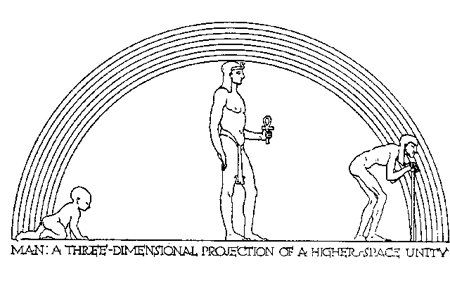
A Chinese Perspective for Cyberspace?
In his article A Chinese Perspective for Cyberspace?, Jan Krikke explains the origins of the isometric metrical projection as having its roots in classic Chinese perspective, and writes that among those who anticipated the usefulness of the isometrical variation of axonometry was the American author and architect Claude Bragdon. In The Frozen Fountain (1932), Bragdon illustrated the spatial quality of isometry with the ingenious drawing on the left. Bragdon gave isometry a glowing description quoted by Jan Krikke: 'Isometric perspective, less faithful to appearance, is more faithful to fact; it shows things nearly as they are known to the mind. Parallel lines are really parallel; there is no far and no near, the size of everything remains constant because all things are represented as being the same distance away and the eye of the spectator everywhere at once. When we imagine a thing, or strive to visualize it in the mind or memory, we do it in this way, without the distortion of ordinary perspective. Isometric perspective is therefore more intellectual, more archetypal, it more truly renders the mental image -- the thing seen by the mind's eye.'
A Spacetime diagram

|
|